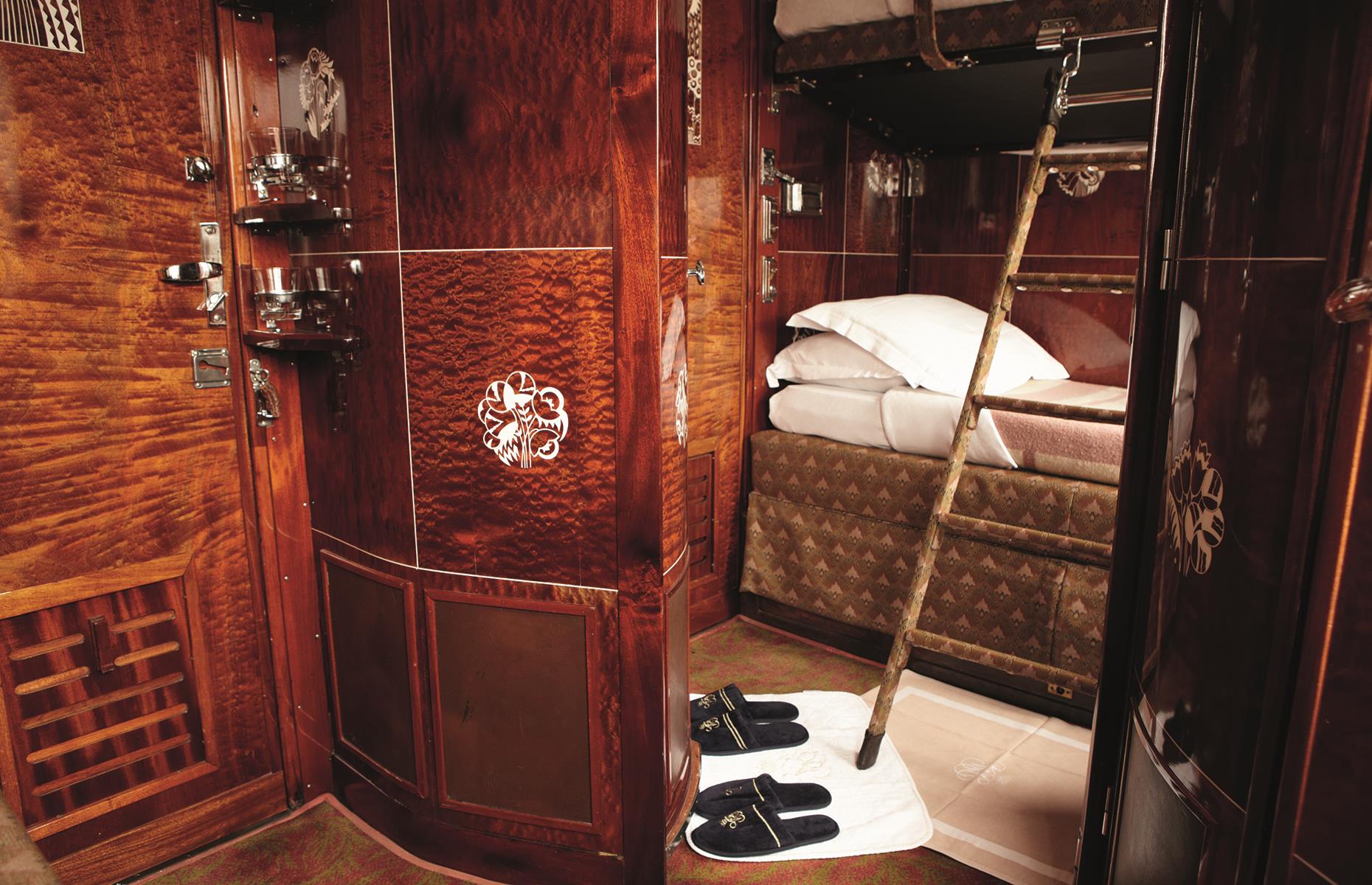A guide to using & booking a Europe rail holiday
If you’re tempted to plan your next European sojourn by train, follow these tips and suggestions and you’ll soon be speeding along Europe’s great rail routes.
Why travel by train?
Though flights offer speed and convenience, travelling by train has a certain romance. The key is to enjoy the journey. Make the travelling an integral part of a longer trip, and appreciate the views as Europe’s landscapes shift from wide, flat plains to dramatic jagged mountains. Enjoy the conversations you’re more likely to strike-up en route.
But enough with the idealised vision, there are also some serious practical considerations. First there’s the convenience of departing from city-centre stations rather than far-flung airports, the immediate (often excellent) connections from big metropolis to small town and village, and the lack of stringent security clearances – no more abandoning your water bottles at the airport. Pack a train picnic, take a few beers on board and sit back and enjoy the view.
Travelling by train, you don’t need to worry baggage allowances, legroom is better, and there’s space to move around, which can be a life-saver if you’re travelling with kids and all their kit.
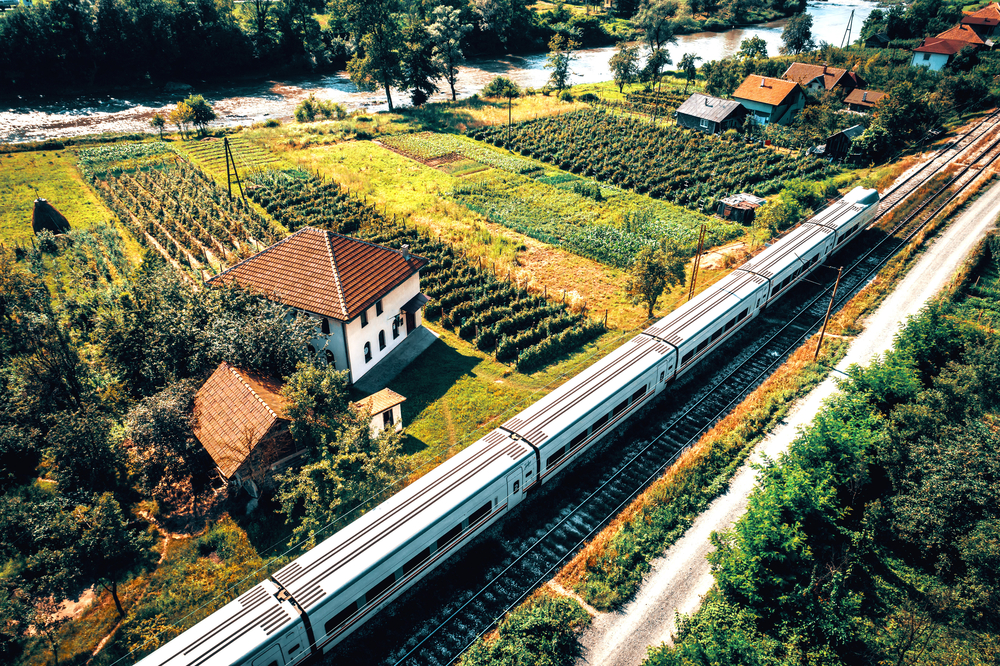 Ajan Alen/Shutterstock
Ajan Alen/Shutterstock
Where to start a European rail holiday
The big news for British travellers in 2018 is the new direct route from London St Pancras to Amsterdam (3hr 40min) and Rotterdam (3hr) by Eurostar. Currently, this is only a time advantage outbound, as on the return journey a change in Brussels (for passport checks) is still needed, which adds an hour to the route time – all the more reason to plan a circular route and incorporate an overnight a stop in the Belgian capital.
If you want to do the whole journey from the UK by train, routes are:
France
You can get to France direct from London to Paris and Lille, or travel further south to Avignon or Marseille. In winter, you can take ski trains direct to the Alp resorts of Moûtiers, Aime-la-Plagne and Bourg-Saint-Maurice (weekly); change in Paris for routes to the Iberian peninsula.
Belgium
Get a Eurostar ticket to “any Belgian station” and you can hop on a local train to Bruges, Antwerp, or any other destination within the country. Brussels is also a major train hub for journeys down through Germany – the underrated border city of Aachen is just over an hour from Brussels, while Cologne is a fabulous weekend break destination – and on through Austria to Slovenia and Croatia or east to the Czech Republic and Poland.
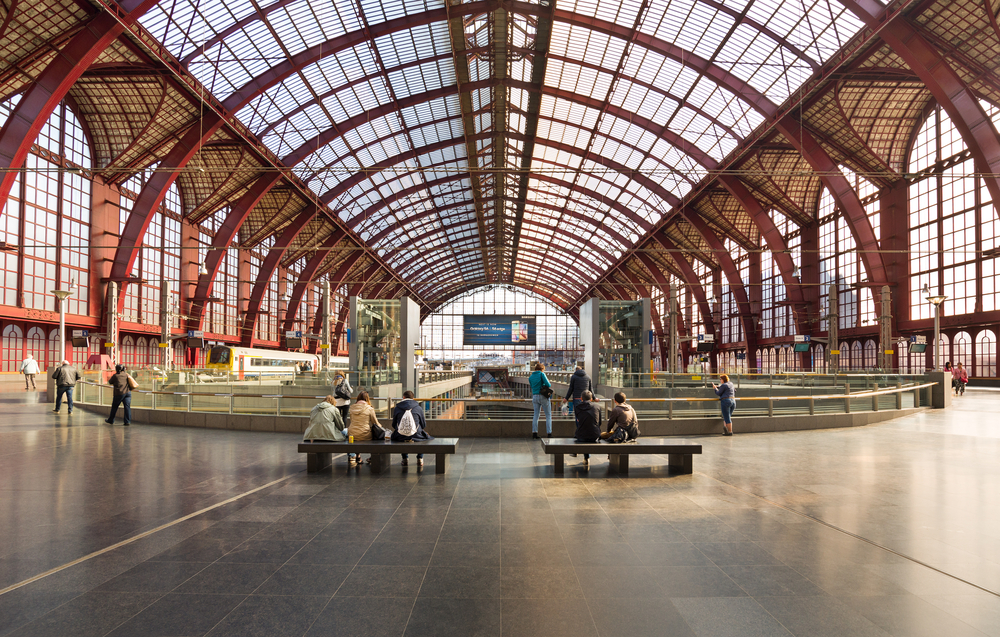 mihaiulia/Shutterstock
mihaiulia/Shutterstock
The Netherlands
You can go direct to Amsterdam and Rotterdam from London, and from there head onto places like Scandinavia. From Amsterdam travel through Germany via Cologne or Osnabrück and then Hamburg, and then on to Copenhagen. This will take up to 24 hours – an overnight stop in Hamburg is recommended.
Other options
Ferries from the UK to various French ports; from Harwich, Hull or Newcastle to the Netherlands; or from Portsmouth to Bilbao are other possible non-flying routes.
If you don’t have the time – or inclination – for the full journey by train, another great option is to fly one-way and wend your way back by train, or buy an open-jaw plane ticket and plot a route by train between two destinations.
The best rail routes in Europe
Northern Spain
There are a couple of ways to travel from San Sebastián (6hr 15min from Paris Montparnasse, changing at Hendaye on the Spanish/French border) to Santiago de Compostela. The main inter-city route (10hr non-stop) can be broken up with stops in such delightful cities as Búrgos and Leon. But for those looking to take a slow route, the narrow-gauge network, known as the FEVE, offers some stunning stretches along the coast and through the Picos de Europa mountains.
It runs all the way from Bilbao to Ferrol, where you can change for Santiago, but is very slow indeed, so you might just want to cover a shorter stretch, such as Oviedo to Ferrol. Money no object? There’s an right-day luxury sleeper version from San Sebastián to Santiago de Compostela.
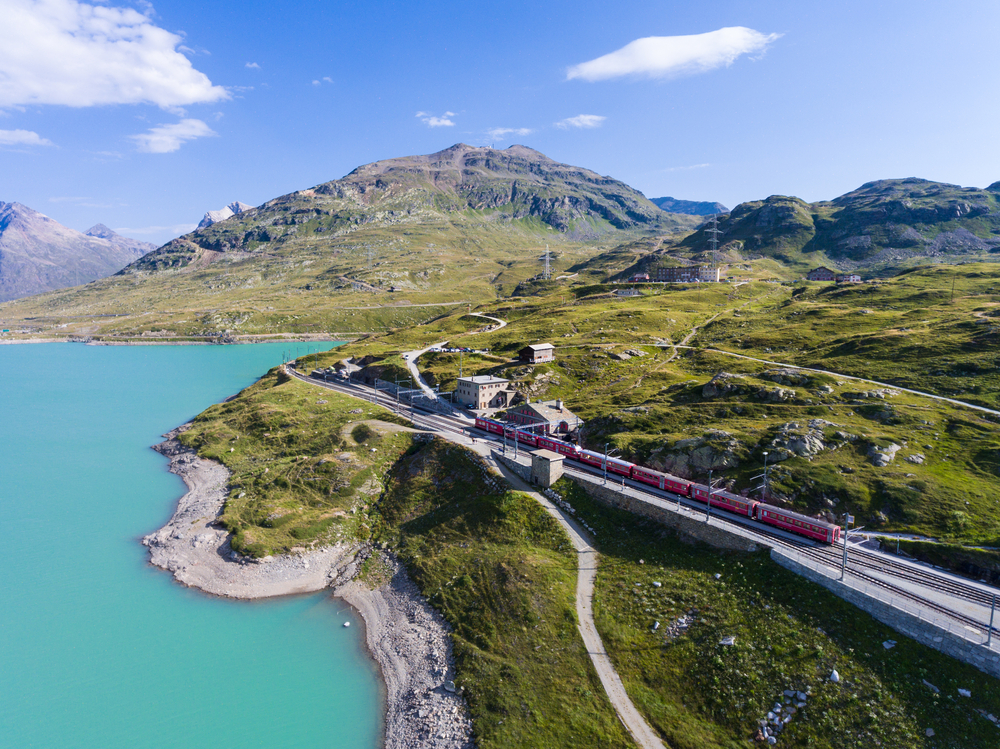 SimonePolattini/Shutterstock
SimonePolattini/Shutterstock
A Swiss mountain adventure
The ultimate train country, with every small town and mountain village connected by a well-integrated networks of trains, local buses – or rack-railways, cable-cars or boats where needed. Classic routes include the spectacular cross-Alps Glacier Express or Bernina Express across the mountains and down towards Italy.
Through France to Barcelona
Fast direct trains to Barcelona are around 6hr 30min from Paris (Gare de Lyon). Break up the journey with stops on this route in such cities as Montpellier, Narbonne, Perpignan and then Figueres in Spain, to visit Dalí’s birthplace. An alternative southwestern route takes you first to the dynamic city of Toulouse (4hr 20min from Paris). From here, a breathtaking Pyrenees route takes just over three hours.
Italy by train
Good value, and with an extensive, easy network of trains, Italy is an excellent country for exploring by train. Book in advance for high-speed connections, or just turn up and pay for the slower, regional routes. From Paris, you can get a sleeper train to Milan, Verona or Venice, to start your exploration.
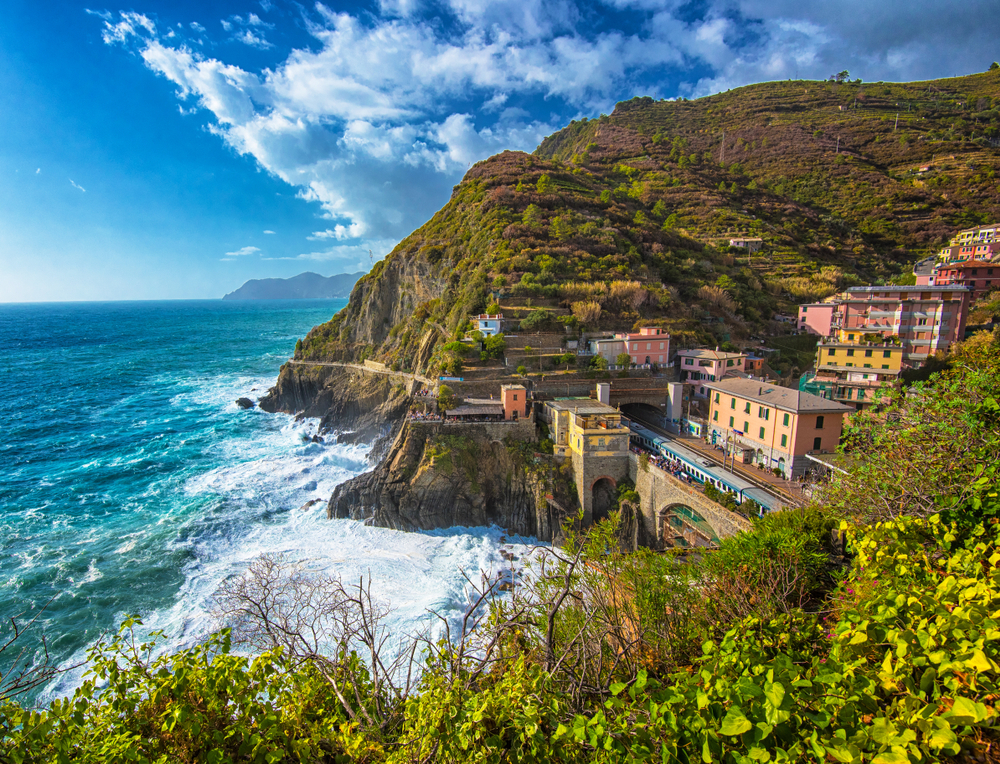 Botond Horvath/Shutterstock
Botond Horvath/Shutterstock
Five capitals
If you want a more cosmopotlian adventure, try this route: from Berlin (6hr 40min, from Brussels, change in Cologne) head to Prague, then Vienna, Bratislava and Budapest, with no more than four hours travelling between the five capitals.
Criss-cross the old divides of central Europe with this easy and relatively quick set of connections between a clutch of the most beautiful capitals in Europe. Each one offers great rail connections and domestic excursions. With a couple of weeks, you could also make stops in Dresden, Germany, and Brno in the Czech Republic.
5 sleeper trains to try in Europe
Though sleeper services have been cut back in recent years (because long-distance times are improving), they can still be a handy option if you want to travel a long way overland. Though of course you miss the views, you will save a night’s hotel cost and arrive at your destination in the early morning. Some are seasonal, most don’t run every day, and you definitely need to book in advance, with options ranging from basic six-person couchette bunks to super luxury private cabins.
- The Trenhotel from Madrid to Lisbon.
- The Snälltåget combined train/ferry between Berlin and Malmö in Sweden (couchettes only).
- The weekly Paris-Moscow express.
- The Schnee-Express. Take a sleeper from Hamburg or Cologne straight through to the Austrian ski resorts such as Zell-am-See or St Anton. Four-bed berths are great for groups, and services on board include the ‘party-wagon’.
- The full Agatha Christie, though not the original Orient Express, the super luxurious, indulgent Venice Simplon Orient Express takes just over 24 hours to travel from London to Venice. You stay in immaculately restored 1920s sleeping carriages and dine in style – around £3,500 per person.
Booking tips & tricks
Avoid the rail pass
Many people think about buying a rail pass, but you likely won't need one unless you prize flexibility above all else. Even then, unless you are planning numerous long international journeys in a set period, they are rarely the best value. As an example, a one-country rail pass costs £173, for three days’ travel in one month within Germany, but booking a single ticket from Berlin to Munich three months in advance starts at around €25.
The turn-up-on-the-day price is €150, while booking two weeks in advance should still halve that. Supplements are also charged for pass holders on some high-speed routes, where reservations are required (for example in France and Spain). Factor in the ease of online booking, and rail passes are far less convenient than the days of yore.
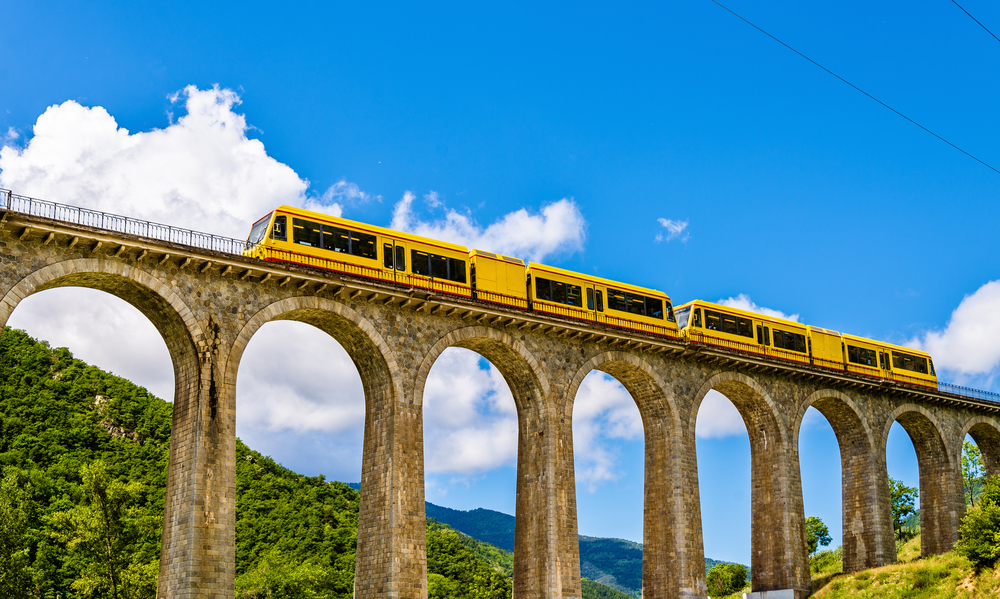 Leonid Andronov/Shutterstock
Leonid Andronov/Shutterstock
Book in advance
The key is to book your tickets as far in advance if possible, particularly for your Eurostar ticket, and for long, high-speed routes in expensive Scandinavian and western European countries. Tickets are generally released three months in advance (though that does vary, with up to six months for some sleepers), and if you are a little flexible about dates and times you can find cheaper tickets. Even booking a week or so in advance will save you money.
Choose your destination carefully
For a budget train adventure, pick your destination carefully. Train travel is considerably cheaper in the Baltics, and parts of eastern and central Europe. For example, travelling from Zagreb in Croatia to Ljubljana in Slovenia – a gorgeous journey that winds its way along rushing rivers of eastern Slovenia – is only around €10 if you turn up and buy on the day.
Research domestic passes
If you’re planning on spending time travelling around one country, it’s worth researching domestic single-country, regional or group discount passes. In Switzerland, the travel passes might seem pricey, but they include local transport as well as boats, and offer excellent extra discounts for nearly all of Switzerland’s museums and half-price tickets on many cable cars.
Likewise, Germany has good group tickets (the Schönes-Wochenende-Ticket allows unlimited travel on the slower trains over the weekend), as does Austria.
Use clever booking sites
The Man in Seat 61 is a trusty first port of call for planning, particularly for routes departing from the UK. To plot any route and find any train in Europe, loco2.com (and their app) is the best all-round search tool. It can provide routes for nearly everywhere in Europe, and direct booking for many (without fees), including Eurostar, French, German, Spanish and Italian trains. However, it’s still worth cross-checking your itinerary with national train websites (which most countries have).
Deutsche Bahn’s Bahn.com also covers nearly all European routes, and is easy to use. If travelling through Germany, one great Deutsche Bahn option is the 24-hour stopover. If booking a single, long-distance ticket, click on “further options” and “add intermediate stops”, and you can include a stop for up to 24 hours in a city en route for the same priced ticket – breaking up your journey and giving you a taster of another city – or even just a stop for lunch.
Comments
Be the first to comment
Do you want to comment on this article? You need to be signed in for this feature

